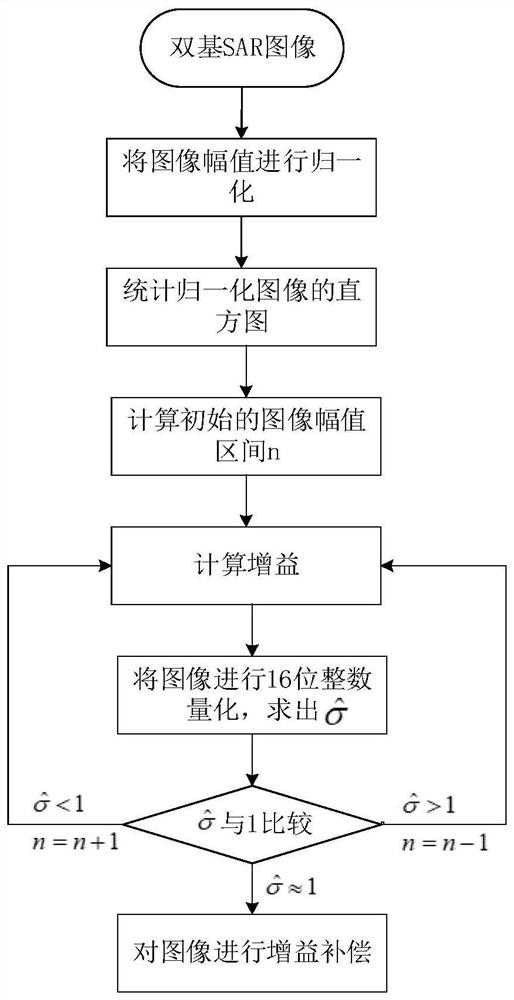A Gain Adaptive Compensation Method for Bistatic SAR Image Based on Rayleigh Distribution
A technology of adaptive compensation and image gain, applied in the electronic field, can solve the problems of low contrast, difficult application, affecting target detection, etc., to achieve the effect of convenient target detection
- Summary
- Abstract
- Description
- Claims
- Application Information
AI Technical Summary
Problems solved by technology
Method used
Image
Examples
Embodiment Construction
[0026] The present invention will be further described below in conjunction with the accompanying drawings.
[0027] Such as figure 1 As shown, a bistatic SAR image gain adaptive compensation method, including:
[0028] Step 1: Preprocess the original bibase SAR image data, and normalize the image amplitude;
[0029] Get the original bistatic SAR image data S im , to count the number of points in the range and azimuth directions of the bistatic SAR image, and then calculate the total pixel points N. Then to S im Perform the absolute value operation to obtain the amplitude distribution matrix S of the SAR image a , using formula (1) for normalization to get the matrix S r .
[0030]
[0031] Step 2: Statistically normalize the histogram of the image;
[0032] Divide the data in the range of 0-1 into K parts. K can be 100, 200, 256, 512 and other data. The larger the value of K, the finer the histogram division. K is generally 256 by default.
[0033] Statistics matri...
PUM
 Login to View More
Login to View More Abstract
Description
Claims
Application Information
 Login to View More
Login to View More - R&D
- Intellectual Property
- Life Sciences
- Materials
- Tech Scout
- Unparalleled Data Quality
- Higher Quality Content
- 60% Fewer Hallucinations
Browse by: Latest US Patents, China's latest patents, Technical Efficacy Thesaurus, Application Domain, Technology Topic, Popular Technical Reports.
© 2025 PatSnap. All rights reserved.Legal|Privacy policy|Modern Slavery Act Transparency Statement|Sitemap|About US| Contact US: help@patsnap.com



